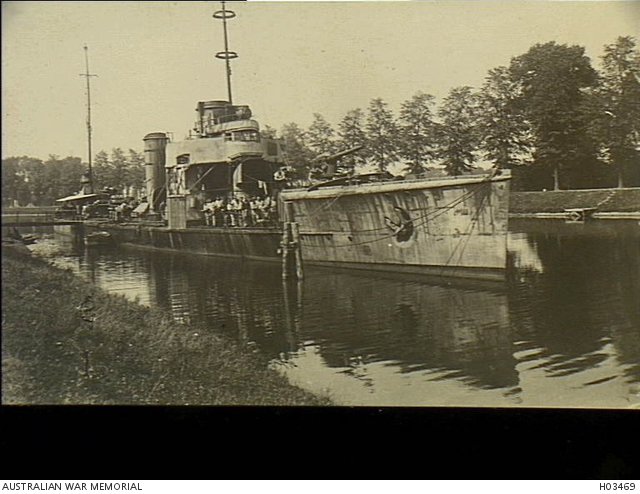Rule of cool
ACCESS: Top Secret
- Joined
- 16 January 2024
- Messages
- 1,908
- Reaction score
- 2,554
I've been trying to wrap my head around the dilemma about what resources might be allocated to the French channel coast, and I think I have come up with some possibilities and some technical developments.
Firstly, holding the French coast and in particular Calais I think would drive a significant change in thinking over what happened with the Belgian coast and Ostend and Zeebrugge. I think at the very least the greater coastline and bigger ports would mean the half-measures that happened in Belgium in 1915 would not be sufficient.
Secondly, the back and forth between the CO of High Seas Fleet, CO of MarineKorps Flanders, Chief of Naval Staff and RiechsMarine Amt (Naval Office) in 1914-15 shows that the new coastline will not get any ships diverted from the High Seas Fleet. I can see the HSF arguments, they had suffered losses at Heligoland Bight and off Texel early in the war and these newly captured bases were very vulnerable to attack until about March 1915 when the defensive guns were emplaced. Thus the new French coastal command will only get ships directly from the CNS/RMA that haven't been allocated to the HSF or Baltic fleet, similar to how the MKF only got the tiny coastal Uboats and Tboats which weren't ordered until weeks after the war began.
Thirdly and arising from the first 2 points, perhaps the new command could be a 'dumping ground for difference'. The 4 x Z1 (V105) Tboats building for the Dutch don't readily fit into the German naval strategy, nor do the 4 big Destroyers building for Argentina for starters. These could be followed by the 8 big destroyers built using machinery built for large Russian destroyers.
In technical terms the 4 big Argentine destroyers were designed to use 4 x 4" from the US. German Tboat doctrine was that the primary armament of Tboats was torpedoes and guns were defensive weapons, as such these big ships were completed with 4 x 88s and sent to the HSF. However if German naval thinking changed in the first weeks of the war as a result of the capture of the French channel coast and ports and these unusual ships were to be 'dumped' in France then it might be decided to not try to conform with HSF practice and alternatively arm them with weapons close to what they were designed for - 4 x 105mm guns as used on German light cruisers. Such ships would be more than a match 1 on 1 with the Tribals of the Dover Patrol and even the modern destroyers of the Harwich Force. If joined by the 8 B97s throughout the rest of 1915 the French coast would have a formidable force of destroyers for offensive tasks.
Firstly, holding the French coast and in particular Calais I think would drive a significant change in thinking over what happened with the Belgian coast and Ostend and Zeebrugge. I think at the very least the greater coastline and bigger ports would mean the half-measures that happened in Belgium in 1915 would not be sufficient.
Secondly, the back and forth between the CO of High Seas Fleet, CO of MarineKorps Flanders, Chief of Naval Staff and RiechsMarine Amt (Naval Office) in 1914-15 shows that the new coastline will not get any ships diverted from the High Seas Fleet. I can see the HSF arguments, they had suffered losses at Heligoland Bight and off Texel early in the war and these newly captured bases were very vulnerable to attack until about March 1915 when the defensive guns were emplaced. Thus the new French coastal command will only get ships directly from the CNS/RMA that haven't been allocated to the HSF or Baltic fleet, similar to how the MKF only got the tiny coastal Uboats and Tboats which weren't ordered until weeks after the war began.
Thirdly and arising from the first 2 points, perhaps the new command could be a 'dumping ground for difference'. The 4 x Z1 (V105) Tboats building for the Dutch don't readily fit into the German naval strategy, nor do the 4 big Destroyers building for Argentina for starters. These could be followed by the 8 big destroyers built using machinery built for large Russian destroyers.
In technical terms the 4 big Argentine destroyers were designed to use 4 x 4" from the US. German Tboat doctrine was that the primary armament of Tboats was torpedoes and guns were defensive weapons, as such these big ships were completed with 4 x 88s and sent to the HSF. However if German naval thinking changed in the first weeks of the war as a result of the capture of the French channel coast and ports and these unusual ships were to be 'dumped' in France then it might be decided to not try to conform with HSF practice and alternatively arm them with weapons close to what they were designed for - 4 x 105mm guns as used on German light cruisers. Such ships would be more than a match 1 on 1 with the Tribals of the Dover Patrol and even the modern destroyers of the Harwich Force. If joined by the 8 B97s throughout the rest of 1915 the French coast would have a formidable force of destroyers for offensive tasks.
Last edited:


